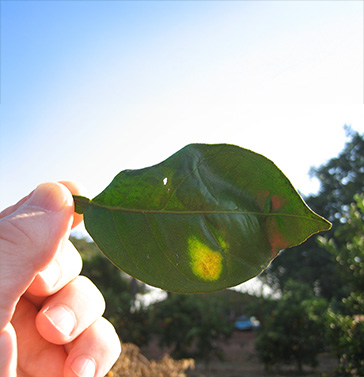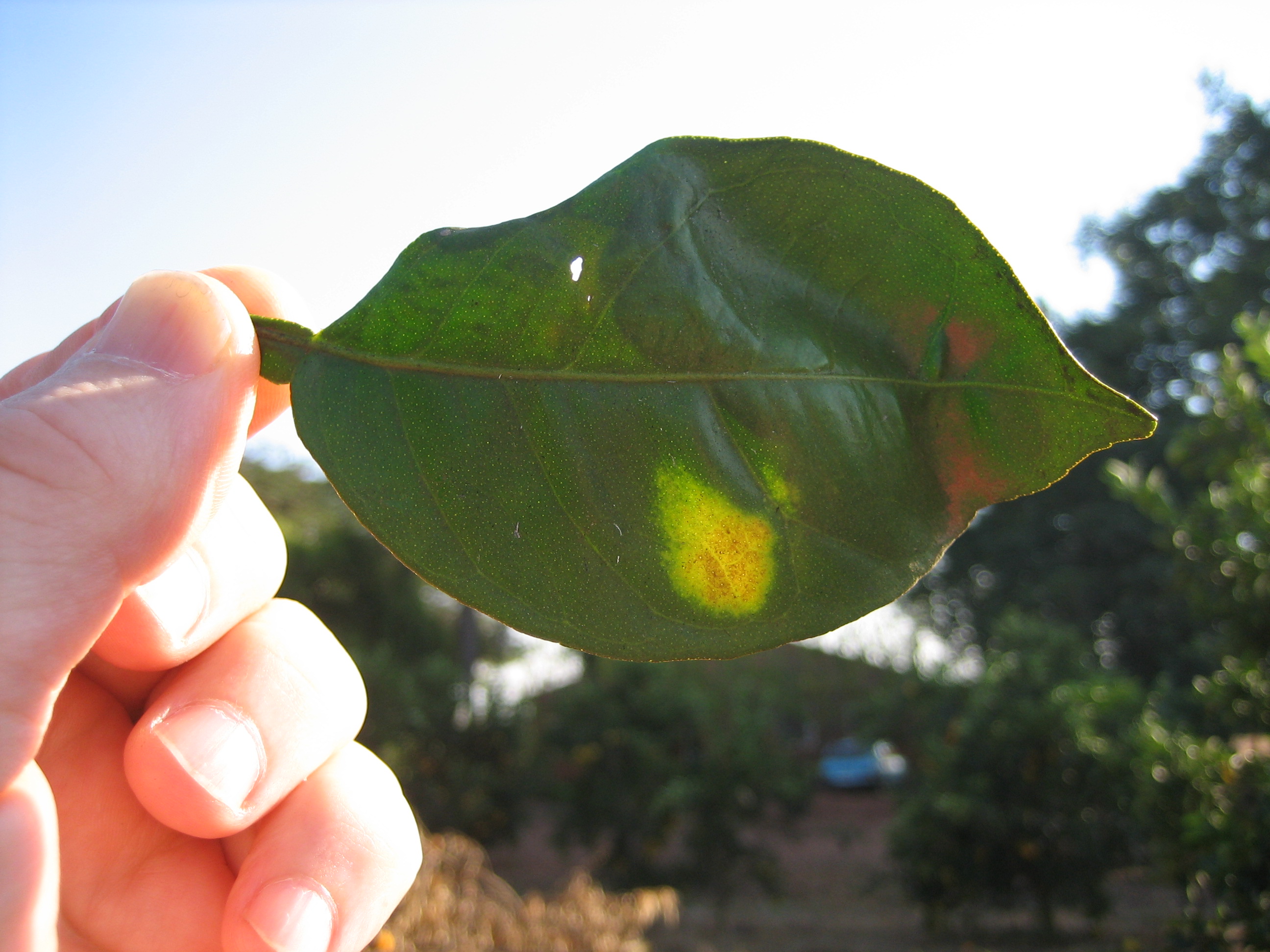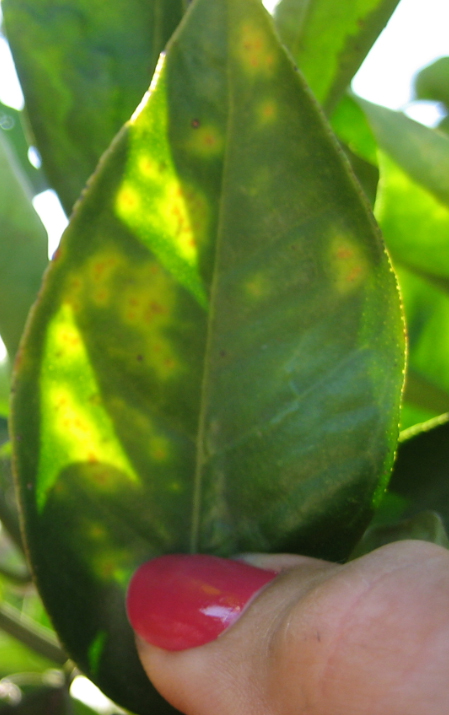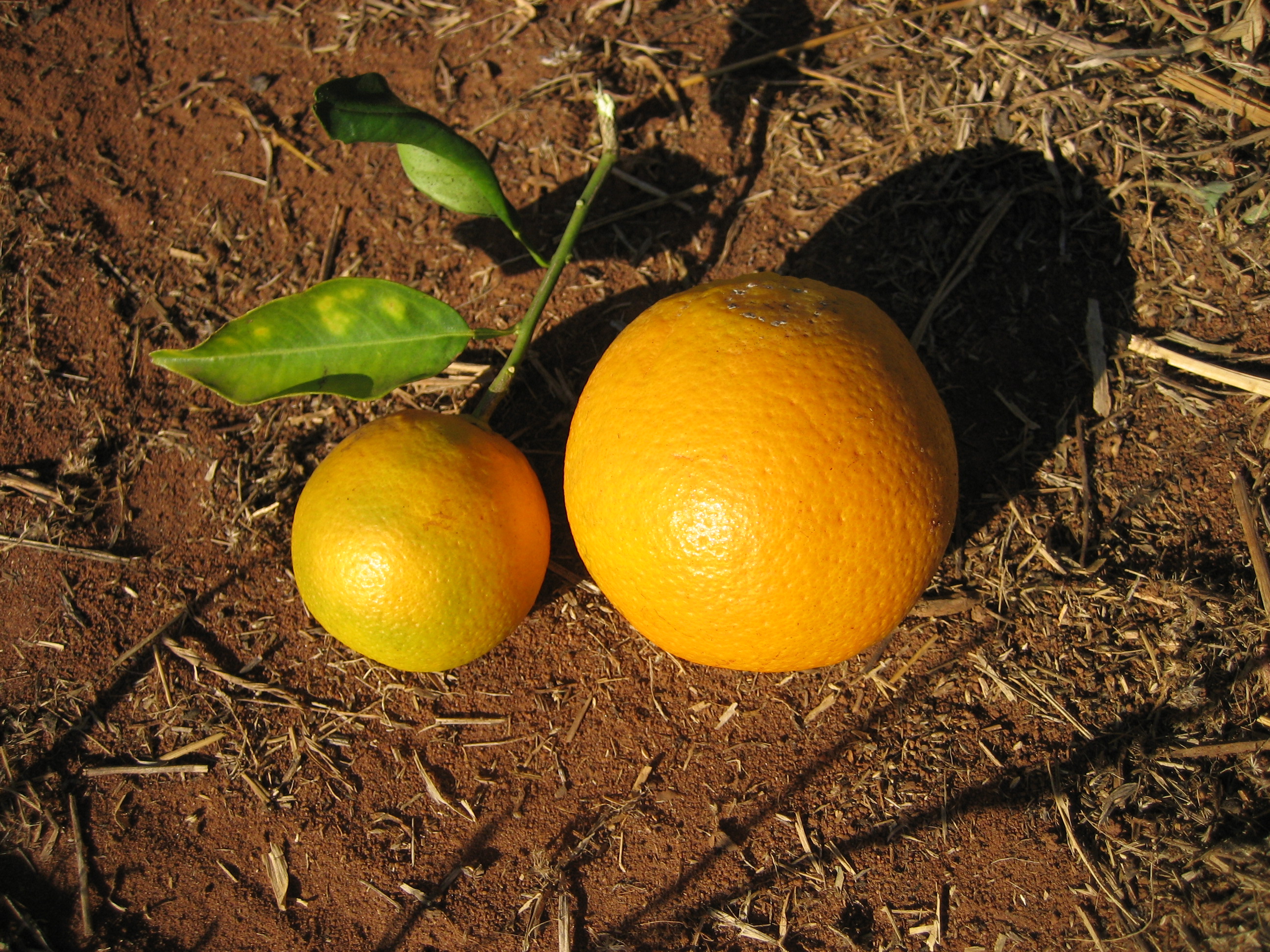Citrus variegated chlorosis Pest Profile
Pest Profile

Description
Xyellla fastidiosa is a xylem-limited, bacterial plant pathogen best known for causing Pierce's disease of grapevines. It is divided into subspecies that attack different hosts. Xylella fastidiosa subsp. pauca causes citrus variegated chlorosis (CVC), coffee leaf scorch, and olive quick decline, and is not known to be in North America. The pathogen limits the movement of water and nutrients inside the plant, causing water stress symptoms, root, and canopy dieback. CVC can be transmitted from one plant to another by flying insects like sharpshooters that feed on the xylem, through grafting infected wood onto healthy plants, and with seed. (J. R. S. Lopes and R. Krugner, 2016). The movement of infected vegetative material is the main way the disease is introduced into new areas.
History
CVC was first described in Brazil in 1987 and has rapidly spread in South America where at least 100 million sweet orange trees have been affected. CVC poses an immediate threat to the citrus industry in California, where native and invasive sharpshooter vectors are widespread. Disease management programs in affected areas are based on exclusion of the pathogen during plant propagation, protection of plants against insect vectors to limit plant-to-plant pathogen transmission, and eradication (or reduction) of inoculum by removing infected plants or pruning diseased branches (Coletta-Filho et al, 2020).
Distribution
CVC is known to occur in Brazil, Ecuador, Argentina, Costa Rica, and Paraguay. Due to the potential damage to the domestic citrus industry and worldwide citrus production, CVC is on the European Plant Protection Organization’s A2 list of regulated quarantine agents (EPPO A2, 2020). The United States Department of Agriculture (USDA) has implemented a Federal Import Quarantine Order for CVC to limit importation of citrus seeds to the United States from infested countries (USDA 2009, DA-2009-49).
Symptoms
Symptoms normally appear on leaves and fruit. Typical symptoms include yellowing or chlorosis of the leaf between the veins on the upper side of mature leaves (resembling zinc deficiency) with gum-like brown lesions on the lower surface. Trees suffer dieback, are stunted and weakened, but are not usually killed. The fruit become significantly reduced in size and quantity, and the fruits harden and ripen early. (Coletta-Filho, et al. 2020).
Commonly, symptoms are observed over the first 10 years of growth, while older trees (15 years old or more) generally show limited symptoms. More often, symptoms appear on newly infected trees in small sections. The disease also results in abnormal flowering. The affected trees have stunted growth. (Laranjeira et al. 2002, Crop Protection Compendium 2005, EPPO 2005).
CVC is transmitted by many species of sharpshooters, including the glassy winged sharpshooter, an invasive pest that has caused serious outbreaks of Pierce’s disease in California. When sharpshooters feed on a host, they ingest large amounts of xylem sap. When they move to a new tree, they introduce the bacteria into the xylem from their mouth parts. Sharpshooters lose their infectivity after molting (Almeida et al., 2005). CVC symptoms can appear like nutrient deficiency and other citrus diseases. It can be difficult to rely on visual symptoms alone for identification therefore laboratory tests are necessary for identification of this disease.

(Photo credit: Dr. Magally Luque-Williams)

(Photo credit: Dr. Magally Luque-Williams)

(Photo credit: Dr. Magally Luque-Williams)
Hosts
Citrus trees have a broad spectrum of CVC susceptibility. Generally, all sweet orange varieties (Citrus sinensis) are susceptible to CVC. However, other citrus species like grapefruits, mandarins, mandarin hybrids, and limes are less affected by the disease. There are also CVC resistant species like Rangpur lime, lemon, citron, and pummelo. There is a broad range of hosts that X. fastidiosa use as pathogen reservoir such as woody, herbaceous weed species including Bermuda grass, rye, fescue, watergrass, blackberry, cocklebur and nettle (Coletta-Filho, et al. 2020). Common orchard weeds such as bluegrass, burclover, cheese weed, chickweed, filaree, London rocket, and shepherd's purse have also been found to be infected.
Damage and Economic Importance
CVC decreases crop yields, makes fruit unsuitable for domestic and international markets, and requires expensive control measures including tree removal and chemical treatment for vector control. In 2000, Brazil suffered a huge economic loss due to CVC. Tree removal and yield reduction resulted in a $110 million dollar loss (Ayres, 2001). The citrus industry in the United States has approximately 680,000 bearing acres, including oranges, grapefruits, lemons, tangelos and tangerines valued at $3.4B dollars annually (USDA, 2020). Fortunately, CVC has not been identified in the United States. However, its citrus growing regions have a suitable climate for CVC, and vectors are already established, putting the citrus industry under high risk. Currently, there is no cure for the disease once the tree is infected.
References
- Almeida RPP, Blua MJ, Lopes JRS, Purcell AH (2005) Vector transmission of Xylella fastidiosa: applying fundamental knowledge to generate disease management strategies. Annals of the Entomological Society of America 98:775–786
- Coletta-Filho, H.D., Castillo, A.I., Laranjeira, F.F., de Andrade, E.C., Silva, N.T., de Souza, A.A., Bossi, M.E., Almeida, R.P.P. and Lopes, J.R.S., 2020. Citrus variegated chlorosis: an overview of 30 years of research and disease management. Trop. Plant Pathol.
- EPPO. 2020. Xylella fastidiosa (XYLEFA). European And Mediterranean Plant Protection Organization PQR database.
https://www.eppo.int/RESOURCES/eppo_databases/global_database - Lopes, J. R. S., Krugner, R., & Brown, J. (2016). Transmission ecology and epidemiology of the citrus variegated chlorosis strain of Xylella fastidiosa. Vector-mediated transmission of plant pathogens, 195-208.
- DA-2009-49 October 6, 2009. Federal Quarantine Order Citrus Greening Disease (CG) and Citrus Variegated Chlorosis(CVC)
www.aphis.usda.gov/import_export/plants/plant_imports/federal_order/downloads/hlb_cvc.pdf - USDA Citrus Fruits 2020 Summary
https://www.nass.usda.gov/Publications/Todays_Reports/reports/cfrt0820.pdf - Coletta-Filho, H. D., Castillo, A. I., Laranjeira, F. F., de Andrade, E. C., Silva, N. T., de Souza, A. A., & Lopes, J. R. (2020). Citrus variegated chlorosis: an overview of 30 years of research and disease management. Tropical Plant Pathology, 45, 175-191.
- Esteves, M. B., Kleina, H. T., Sales, T. D. M., Oliveira, T. P., de Lara, I. A., Almeida, R. P., ... & Lopes, J. R. (2019). Transmission efficiency of Xylella fastidiosa subsp. pauca sequence types by sharpshooter vectors after in vitro acquisition. Phytopathology, 109(2), 286-293.
